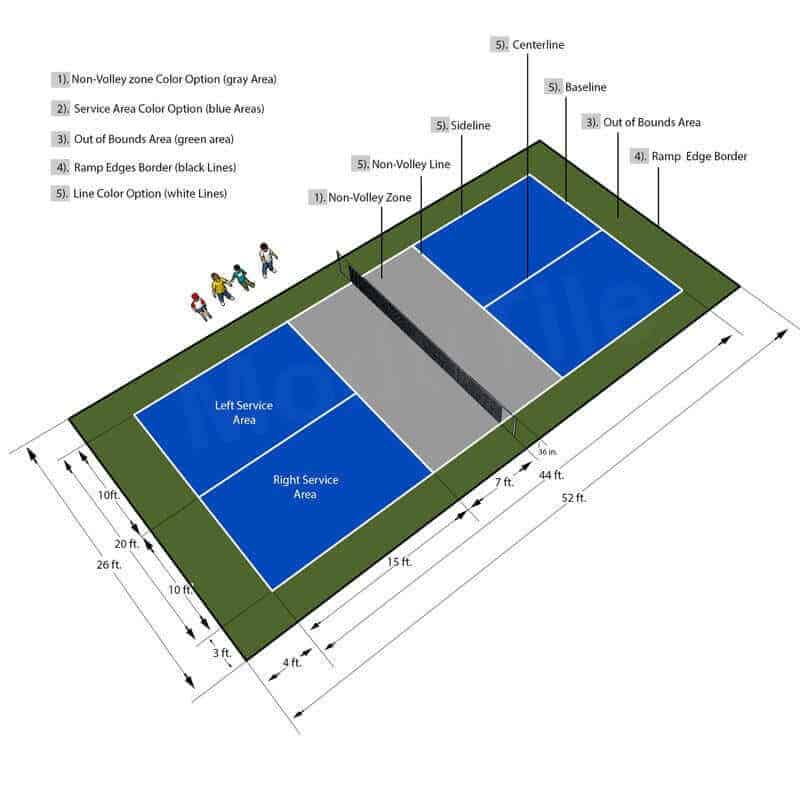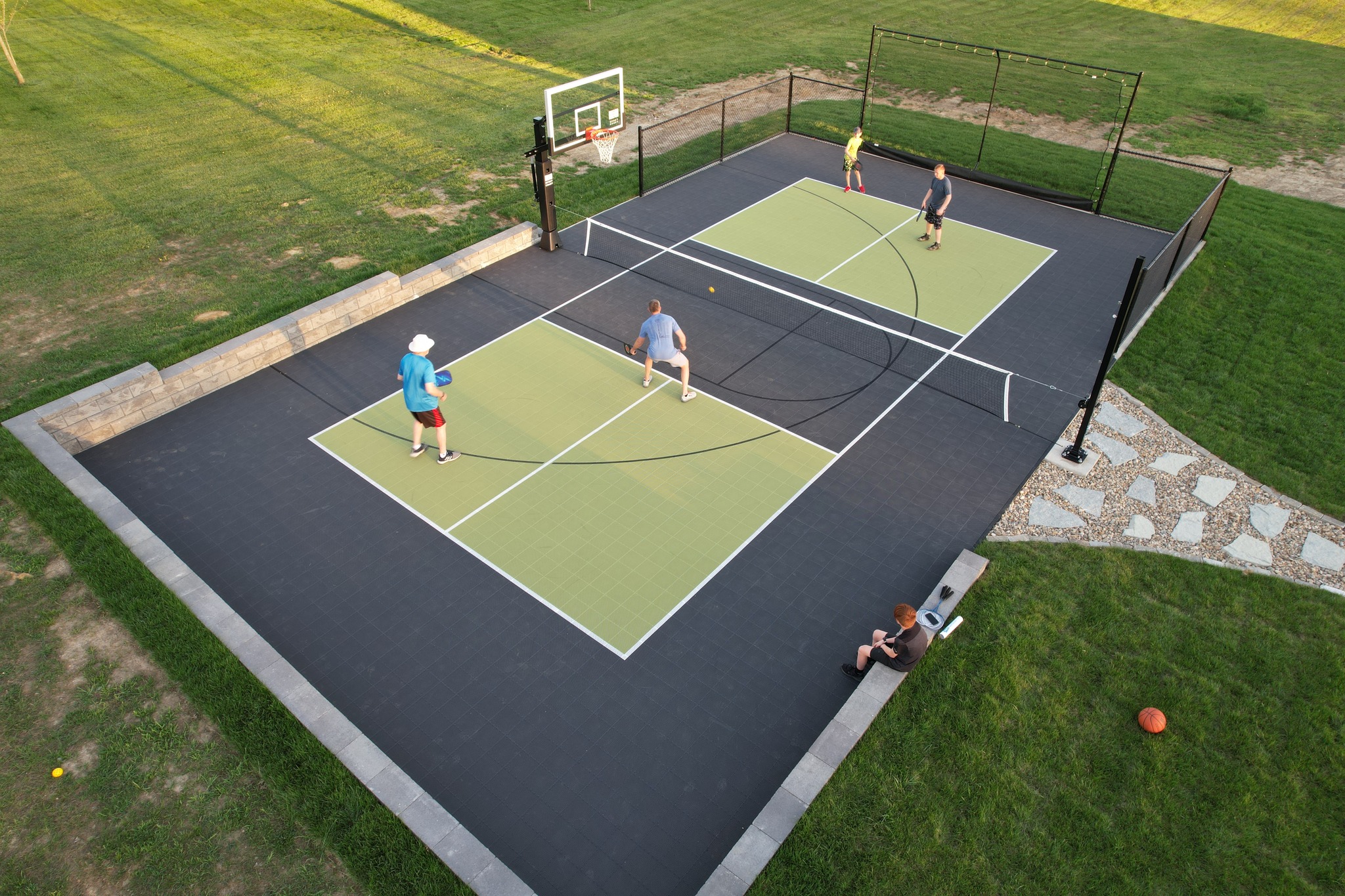How to Choose the Right Materials for Pickleball Court Construction
Wiki Article
Increase Resident Engagement With Community-Driven Pickleball Court Projects
The appearance of community-driven pickleball court tasks presents an one-of-a-kind chance to cultivate local interaction and strengthen area ties. By proactively including residents in the planning and implementation phases, such campaigns not only develop entertainment areas but additionally promote a shared feeling of ownership. Recognizing the actions to initiate these jobs, consisting of effective stakeholder interaction and resource allowance, is essential. The actual question stays: just how can these grassroots initiatives be purposefully applied to make sure sustainability and inclusivity in diverse neighborhoods? Discovering successful situation researches may give the understandings required to address this pivotal worry.Relevance of Neighborhood Interaction
Area involvement is an important aspect in the successful advancement of pickleball court jobs, as it promotes a sense of ownership and collective duty amongst homeowners. When area participants are proactively associated with the planning and application stages, they are much more likely to support for the task's long-lasting success. Involving stakeholders such as regional players, families, and leisure teams makes certain that the centers satisfy the diverse needs and choices of the neighborhood.Additionally, area involvement grows a supportive setting where homeowners feel empowered to contribute their sources and concepts. Pickleball court construction. This joint method can result in ingenious solutions that boost the style and functionality of the courts, making them much more attractive to a wider target market. Furthermore, involving homeowners in decision-making procedures can enhance social connections, promoting inclusivity and unity within the neighborhood
The visibility of community assistance for a pickleball task can likewise play a critical duty in protecting funding and approval from regional authorities. By demonstrating a shared dedication to leisure advancement, communities can successfully advocate for sources and policy modifications that favor the facility of pickleball courts, ultimately enhancing the neighborhood culture and entertainment landscape.
Steps to Launch a Project
Starting a pickleball court task needs an organized strategy that develops on the structure of community interaction developed in previous discussions. The primary step is to construct a project committee making up neighborhood stakeholders, enthusiasts, and reps from relevant organizations. This diverse team ensures that multiple point of views are considered.Next, carry out a demands analysis within the community. Studies, emphasis teams, and public conferences can be effective in evaluating passion and gathering input on potential court locations, preferred features, and organizing choices. Following this, create a job plan outlining duties, timelines, and purposes.
As soon as the plan remains in area, involve with regional authorities to comprehend zoning guidelines and any kind of needed licenses. Interacting transparently with the neighborhood throughout this process is vital, as it promotes count on and urges more engagement.
Furthermore, arranging neighborhood occasions can assist preserve momentum and excitement. These occasions can offer as platforms for further conversation and aid to reinforce area connections. Record every action taken and maintain detailed documents, as this will certainly be valuable for future stages of the project, consisting of funding and source procurement.
Funding and Resources Available
Securing financing and resources for a pickleball court task is commonly an essential action that can figure out the project's usefulness and success. Different avenues exist for acquiring financial backing, ranging from public financing to private sponsorships. City click now government grants, commonly focused on advertising community wellness and leisure, can offer significant sponsorship for such efforts.Along with government sources, not-for-profit companies and structures frequently use gives particularly for sports and community advancement tasks. Engaging regional organizations as enrollers can additionally be a fruitful method; many companies are anxious to purchase neighborhood campaigns that enhance their business social obligation account.
Crowdfunding systems have actually arised as a viable option for grassroots fundraising, allowing area members to contribute directly to the project. This approach not only elevates funds but also fosters a sense of ownership among participants.
Style and Preparation Factors To Consider
Reliable style and preparation are essential elements of any kind of successful pickleball court project adhering to the purchase of funding and sources. A thorough assessment of the proposed area is essential; this includes analyzing availability, distance to existing community amenities, and the potential for visibility and interaction.The layout of the court must stick to main size specifications while taking into consideration the bordering atmosphere. Incorporating attributes such as seats, shade structures, and proper illumination can substantially improve gamer experience and viewer satisfaction. Products selected for the court surface area must prioritize sturdiness and security, with options like acrylic or asphalt published here offering optimum efficiency.
Involving neighborhood participants in the style process cultivates a sense of possession and makes sure that the facility fulfills regional needs - Pickleball court construction. This can be attained through public appointments and studies, permitting stakeholders to reveal their choices and worries
Sustainability should likewise be a priority; integrating environment-friendly materials and methods can contribute to long-lasting stability. Creating a maintenance strategy to make certain the court remains in exceptional problem will sustain ongoing neighborhood involvement and participation in pickleball activities.

Success Stories and Case Studies
Highlighting the transformative influence of community-driven efforts, several success tales illustrate exactly how collective initiatives have actually resulted in the growth of dynamic pickleball courts throughout numerous regions. One notable instance is the initiative in a little town in Florida, where residents grouped to convert an underutilized tennis court into a devoted pickleball facility. Via fundraising occasions and partnerships with local services, the area elevated enough funds to mount new internet, resurfacing, and lines, inevitably promoting a vibrant center for neighborhood players.Likewise, in a suburb of California, a grassroots activity arised to create pickleball courts in a neighborhood park. The project not only engaged volunteers for construction however additionally included workshops to involve area members in the sport. Consequently, the courts became a focal point for social communication and physical fitness, bring in players of all ages.
These study exhibit how community-driven jobs can improve neighborhood involvement, promote physical activity, and reinforce social bonds. By leveraging collective sources and excitement, areas can successfully sustain and produce pickleball centers that offer varied populaces and cultivate weblink a feeling of belonging.

Final Thought
To conclude, community-driven pickleball court tasks function as essential tools for improving local interaction and cultivating a sense of belonging amongst residents. By prioritizing stakeholder participation throughout the planning and application stages, these efforts can properly deal with varied community demands. Additionally, leveraging readily available resources and taking a look at effective study can give valuable insights for future tasks. Ultimately, such efforts contribute to the change of public rooms into dynamic facilities of health and fitness and social interaction, enhancing area ties.The appearance of community-driven pickleball court jobs provides a distinct possibility to cultivate regional involvement and reinforce community connections.Community interaction is a critical component in the effective growth of pickleball court tasks, as it cultivates a feeling of possession and collective obligation amongst locals. When neighborhood participants are proactively entailed in the preparation and application stages, they are much more likely to promote for the project's long-term success.Initiating a pickleball court task calls for an organized technique that constructs on the structure of area interaction established in previous discussions. The task not just engaged volunteers for building and construction yet likewise included workshops to involve area members in the sport.
Report this wiki page